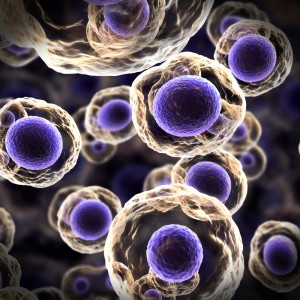 A new study entitled “HUWE1 Ubiquitylates and Degrades the RAC Activator TIAM1 Promoting Cell-Cell Adhesion Disassembly, Migration, and Invasion” identified the E3 ligase HUWE1 as an important regulator of the dissemination of lung cancer cells. The study, published in the journal Cell Reports, has potential implications in the design of new therapeutics to prevent carcinoma cell invasion and metastasis.
A new study entitled “HUWE1 Ubiquitylates and Degrades the RAC Activator TIAM1 Promoting Cell-Cell Adhesion Disassembly, Migration, and Invasion” identified the E3 ligase HUWE1 as an important regulator of the dissemination of lung cancer cells. The study, published in the journal Cell Reports, has potential implications in the design of new therapeutics to prevent carcinoma cell invasion and metastasis.
Metastasis, the process by which cancer cells leave their primary tumor location and reach secondary distant body parts, is responsible for the majority of cancer-related deaths (more than 90%). In order to metastasize, cancer cells need to loose their epithelial structure and then acquire migratory and invasive capacities, known as epithelial-mesenchymal transition. This requires the loss of the adherens junctions, protein complexes that occur at cell–cell junctions in epithelial tissues and are composed by a key protein, E-cadherin. This is usually achieved by growth factors, such as the hepatocyte growth factor (HGF) secreted by both tumor and stromal cells.
In this study, the authors wanted to further understand the role of the E3 ligase HUWE1 in the tumorigenic process, since its expression levels were shown to be up-regulated in certain cancers but down-regulated in others.
The researcher team, from the Cancer Research UK Manchester Institute, discovered that in epithelial cells, including lung carcinoma cells, HUWE1 targets the ubiquitination and subsequent proteasome degradation of a key protein in the cadherin adhesion process, the TIAM1 (short for T lymphoma invasion and metastasis inducing protein 1), upon stimulation with HGF.
They showed that if the process of degrading TIAM1 fails or if cells are depleted of HUWE1, then the disassembly of the epithelial structures is impaired, preventing the acquisition of the migratory and invasive potential of cells stimulated with HGF. As such, their results identify HUWE1 as a regulator of TIAM1 signalling network in response to HGF.
The authors propose that pharmacological agents targeting the interactions between HUWE1 and TIAM1 have the potential to impair the acquisition of an epithelial-mesenchymal transition and, therefore, prevent the metastatic dissemination of lung cancer cells.
Dr. Angeliki Malliri, study leading author and investigator at the Cancer Research UK Manchester Institute at the University of Manchester noted in a news release, “This important research shows for the first time how lung cancer cells sever ties with their neighbors and start to spread around the body, by hijacking the cells’ recycling process and sending it into overdrive. Targeting this flaw could help stop lung cancer from spreading.”
Nell Barrie, Cancer Research UK’s senior science communication manager added, “Lung cancer causes more than one in five of all cancer deaths in the UK and it’s vital that we find effective new treatments to fight the disease and save more lives. Early-stage research like this is essential to find treatments that could one-day block cancer spread — which would be a game changer. It’s also crucial that we find ways to diagnose the disease earlier, when treatment is more likely to be successful and the cancer is less likely to have spread.”


